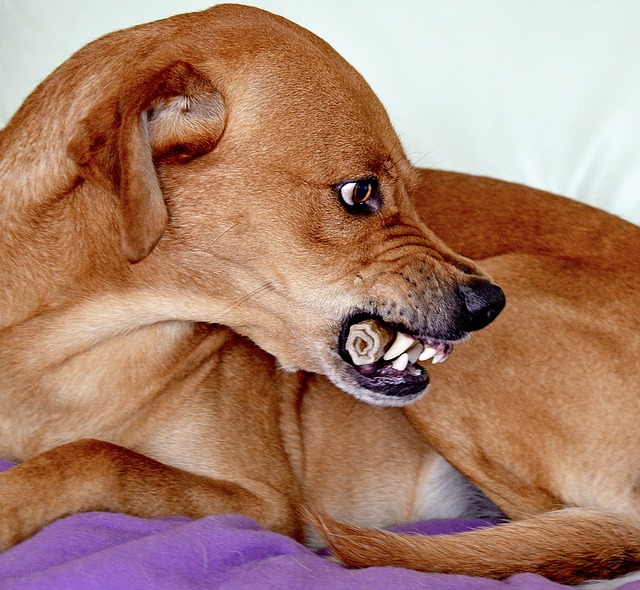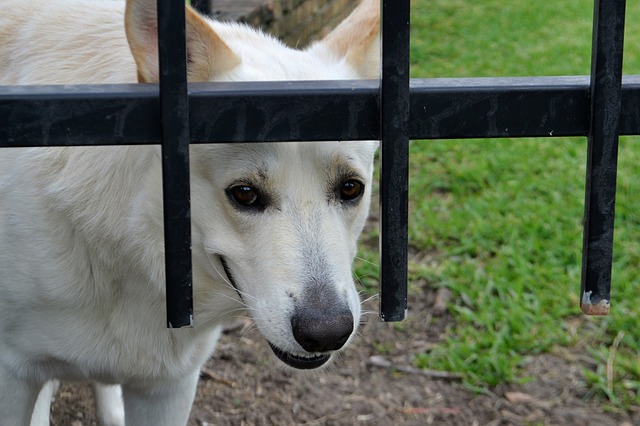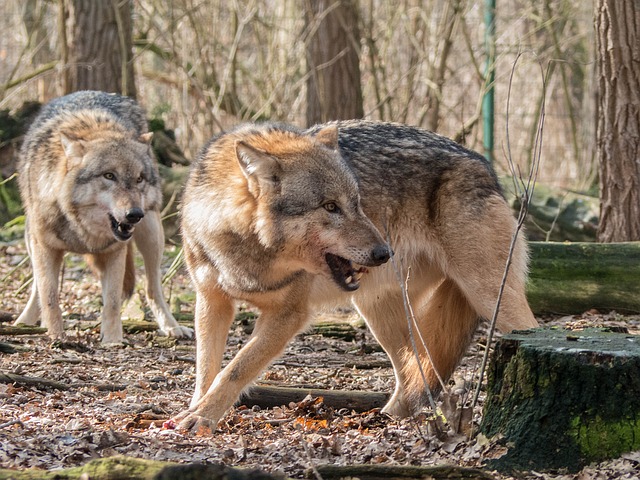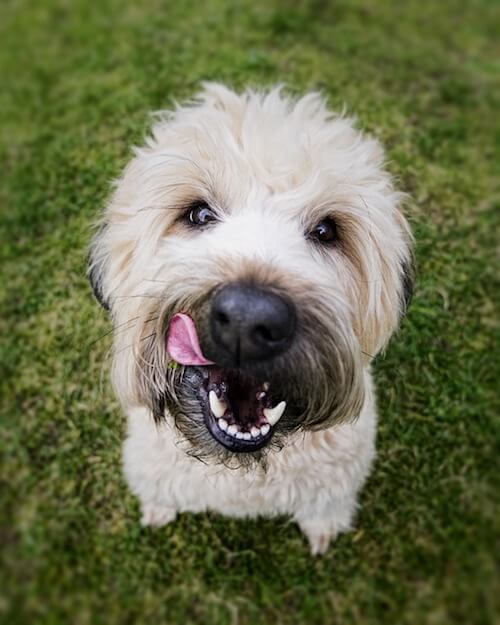About Us
Blog Archive
-
▼
2019
(1687)
-
▼
February
(106)
- German Debt Collector Sells Family’s Beloved Pug o...
- Science Explains How Your Dog REALLY Feels About You
- Woman Rescues Starving Dog Left to Die on Streets
- Senior Rescue Dog Diagnosed with Brain Tumor Fight...
- 5 Warning Signs You May Have the Wrong Dog Sitter
- 5 Key Benefits of Probiotics For Dogs
- Neglected, Abused Malamute Makes Incredible Recovery!
- 7-Year-Old Girl Fighting Brain Tumor Asks For Lett...
- Baby Gifts With A Dog Theme
- 10 Reasons to Fall in Love with a Dog Person
- 10 Easy Ways To Stop Your Dog From Begging
- Left Behind to Eat Garbage, George Has Found His F...
- Veteran’s Service Dog Attacked By Groomer – Tail A...
- Your Dog's Personality Can Change Over Time
- Enthusiastic Dog Hysterically Fails His Service Do...
- Why Does Your Dog Eat Tissues?
- 10 Reasons Mutts RULE
- 9 Myths About Dog Aggression
- Why On Earth Does My Dog Eat Poop?
- Constant Panting Could Be A Sign Of A Serious Problem
- Ask A Vet: Why Does My Dog Sniff People’s Privates?
- How To Read Dog Body Language
- 9 Ingredients That Shouldn’t Be in Your Dog’s Shampoo
- Dog And Tortoise Rescued From Tunnel
- 15 Dog Breeds You Think You Want But Probably Shou...
- 20 Fruits & Veggies Your Dog Will Love!
- 8 Fun Ways to Get Fit With Your Fur Baby
- City Photographer Gives Up Everything To Live In T...
- Step-By-Step: How To Be A Dog…In 21 Hilarious Illu...
- 12 Funny Things Dog Lovers Do That We Don’t Always...
- 5 Ways You’re Crushing Your Dog’s Spirit Without E...
- 10 Breeds That Stay Puppies The Longest
- Doggy Day Care: Costs, Services and Selection
- Service Dog Sully Meets Hero Pilot Captain Sully
- Is Drinking Toilet Water Safe for Your Dog?
- The Top 5 Richest Dogs Of The 21st Century
- Petsmart Anti-Pit Bull Policy Keeps 9 Week Old Pup...
- Take Your Dog On A Sniffari
- Smiling Dog: Hózhó
- Smiling Dog: Serena
- 7 Ways Your Pup Is Secretly Telling You He’s Stressed
- Does Your Stress Impact Your Dog? Science Says Yes!
- You Helped Give Hope a Chance to Find a Home!
- Rescues Can Help More Dogs With Help From Rescue Bank
- How To Correct A Dog That Doesn’t Come When Called
- Couple Gives Up Their Dream Wedding To Ensure Term...
- Warning For Small Dog Owners After Bird Of Prey At...
- Top 22 Dogs That Should Be Getting Their Ears Clea...
- Family Soccer Time With Dogs
- Can My Dog Eat Almonds?
- What You Need To Know About Kidney Infections In Dogs
- Can You Give Keller His Forever Home? Austin Anima...
- How Examining The Bacteria In Your Dogs Gut Can He...
- 5 Epic Ideas to Throw The Perfect Birthday Party F...
- Top 3 Dog Foods That Have Never Been Recalled
- 9 Things Only People Who Have Rescued A Dog Unders...
- This Google Chrome Add-On Is FREE and Feeds Shelte...
- Ohio Police Officer Surprises Daughter With Stray ...
- Luke Bryan Adopts Senior Shelter Dog
- A Treat You Can SHARE with Your Dog? These Organic...
- Dog Snugglers Needed at Humane Society of Tampa Bay
- This Is What You Must Know About The Rainbow Bridge
- Is It Safe To Microchip Your Dog?
- Smiling Dog: Rocco
- Dogs Rescued From South Korea
- A Dog Marriage for All the Right Reasons
- Photos Show The True Life Of Military Dogs
- Vets Can Do More To Reduce The Suffering Of Flat-F...
- Lovable Pocket Pitty Has Been Waiting Nearly 1000 ...
- Shelter Throws Wedding For Bonded Senior Sweethearts!
- Military Dog Postage Stamps
- Tribute to Titan: Where Did you Go?
- 8 Things Only Dog Parents Understand
- 5 Reasons Your Dog Needs a Friend
- 7 Proven Ways To Make Your Senior Feel Like A Pup ...
- These 10 Canine Commandments Will Melt Your Heart
- 5 Reasons Science Says Your Dog Should Sleep in Yo...
- Here’s The Reason Why Your Dog’s Feet Smell Like F...
- Now You Can Drink Wine AND Feed Shelter Dogs At Th...
- Bark Likes This: 10 Charming Dog Pins for Dog Lovers
- Doggy Retirement Home Finds A Hilarious Solution T...
- Smiling Dog: Quincy Jackson
- Letter From A Rescue Dog
- Do Dogs Have A Concept Of Time?
- Skinny Outside Dog Finally Lives Happy Life Indoors
- Boozehounds Combines Bar, Dog Park
- 5 Signs Your Dog Is Really A Human In Disguise
- 7 Simple Ways to Make Your Dog Smarter
- Can Dogs Eat Bananas?
- 25 Gifts for People Who Are Crazy About Dogs & Wine
- Shelter Dog Helps Veteran Find Joy In Life Again
- 10 Things Only Small Dog Lovers Will Understand
- 10 Things Only Big Dog Lovers Understand
- New Research Shows That Petting Dogs Is Like A Dru...
- Heartbroken Man Who Was Saved By A Chihuahua Has R...
- World’s Cutest Dog Dies
- Do Bigger Dogs Equal Smarter Dogs? New Study Offer...
- Bark Likes This: Pocket Sized Dog Portraits
- Does Your Pup Love You? Here’s How They Say It.
- Volunteers Wanted: Must Want To Drink Wine And Fee...
-
▼
February
(106)
Translate
Breaking News
February 2019
Senior Rescue Dog Diagnosed with Brain Tumor Fights for Her Life
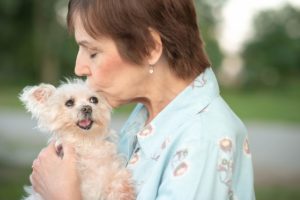
After spending a lifetime in a puppy mill, Chloe was finally rescued. Tragedy struck again, however, when Julia Arney’s vet recommended she euthanize Chloe, her senior Maltese, due to a brain tumor. But Julia was determined to give her beloved pet a fresh start, and Chloe was ready to fight!

“Every day is a gift. We were supposed to lose her so long ago.”
In September 2017, Julia Arney’s vet recommended she euthanize her senior Maltese, Chloe. Julia was heartbroken – but she wasn’t ready to say goodbye or give up without a fight. “I wanted to exhaust every option and leave no stone unturned,” says Julia.
Adopting Chloe
A few years earlier, Julia was looking to bring a new dog into her family. She searched online and found one who caught her eye, but had “accidentally transposed the zip code, so instead of living North of Indy, where I live, the dog was in Colorado Springs!”
Despite the mixup and distance, Julia’s husband said, “go see her!” So she flew out west and got approved to adopt the pup. The foster family was out of town for a few days, so to fill the time, Julia volunteered at a local kennel. This is where she met Chloe… an older Maltese who was not the dog she had flown to Colorado to meet.
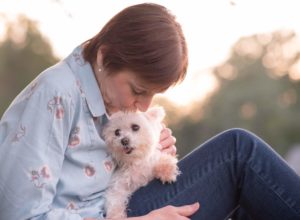
“It was an instant connection,” says Julia. “Chloe would make eye contact with me and bark if I walked by. The lady in charge of the kennel said she’d been there 11 months and had never barked. So I went to see her and that was it. She picked me.”
Julia called her husband and said, “honey, I’m in trouble.” He heard my voice and immediately told me to “bring ‘em both home.” But the airline would only let her travel with one dog, so she flew home with Peyton, the dog she’d originally gone out to adopt, and then turned right around at the airport and went back for Chloe. “I could not get back fast enough,” says Julia. “She stole my heart immediately.”
The sweet senior pup was the perfect fit for Julia’s family. She’d been rescued from a puppy mill where she’d lived for the first 9.5 years of her life, and had a lot of health issues – but it wasn’t too late for a fresh start. Having been raised in such terrible conditions, sweet, petite Chloe didn’t know what it was like to live as part of a family. “When we brought her home, there were a lot of things she didn’t know about, like sitting on someone’s lap for hours. But it sure didn’t take her long to adjust to the love! When she wants attention, she sure lets you know. She’s a snuggler now.”
Julia and her family were head-over-heels in love with Chloe – which made it all the more heartbreaking when the five-pound Maltese was diagnosed with a brain tumor.
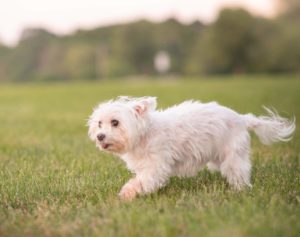
The Diagnosis – and a Fresh Plan
When Julia’s vet recommended putting Chloe to sleep due to her illness and advanced age, Julia was devastated – and determined to find a solution to keep Chloe happy and healthy as long as possible.
After some research, she found a holistic vet who said, “if she’s a fighter, we will do everything we can.” This vet recommended herbs and medicine, treatments like acupuncture, massage therapy, and lasers, and a healthier diet. “She said that one-third of success is making sure you have her on the right food.”
Julia began researching the best options for healthy dog food. “I tried a couple other brands and I wasn’t happy. They said they were fresh but they often had freezer burn, and I thought: how long was this in a warehouse if it already has freezer burn?” And Chloe can be a picky eater, so it was hard to get her to take the herbs and medicine, even in food.

Then, a breakthrough: she discovered NomNomNow. She took the nutritional information to her vet, who was on board right away. “She said ‘that’s it. That’s the food you need to have her on.’” Julia immediately switched Chloe’s diet to NomNomNow, and she took to it right away, even with the herbal holistic medicine added. To serve it, Julia says, “I warm it up lightly. It smells like food, it looks like food, it is real food.”
NomNomNow’s fresh, healthy meals – along with the vet-recommended herbal holistic medicine and treatments – have made a world of difference in Chloe’s health. Her coat is shinier, her eyes are brighter, and her health is vastly improved.

“Here we are 14 months later. I know we are on borrowed time, but every day with Chloe is a gift. I’ve had some health issues myself and been in the hospital, and she’s what got me through.”
Julia now has two dogs eating NomNomNow and says “it’s worth its weight in gold. I feel so much better about what I’m giving them. I know that it’s part of our success in treating Chloe. I try to really tell everyone – fresh food might not always be the cheapest, but consider what you’re feeding them. If your animals are your family, and you knew what was in regular dog food, you really wouldn’t feed that to family. We’re so careful about what we put in our bodies, but people don’t realize that most dog food has a lot of stuff that is horrible.”
“We have to do better for our pets. We wonder why our animals don’t live as long as they used to, but yet we feed them stuff that is just not good for them.”

Chloe’s Impact
Chloe is now 15, and her life has had a big impact – not just on Julia, but on the world. Julia was forever changed by learning about Chloe’s puppy mill experience, and has dedicated her life to education and fundraising on the topic. Since being adopted, Chloe has not only overcome health issues, but has also helped raise tens of thousands of dollars toward puppy mill awareness.
“Even after all of those years being harmed, used, neglected at the hands of humans, the way she can forgive is incredible,” says Julia. “She shows everyone she meets nothing but love. We did a fundraiser with Harley Davidson and even these big, burly guys loved her. I remember people saying things to me about having a ‘heart dog’ that changes you forever. I had always loved all my dogs… well, I get it now. I love all my dogs tremendously. But this one. She’s the one.”

Julia believes Chloe wouldn’t be here today to share her story if it weren’t for NomNomNow. “We are so appreciative for the quality of food. It’s fresh and it’s SO healthy. We are thankful to all of you. Everyone is so responsive and helpful. You walk the walk, and it shows.”
The post Senior Rescue Dog Diagnosed with Brain Tumor Fights for Her Life appeared first on iHeartDogs.com.
via Whisker Therapy
5 Key Benefits of Probiotics For Dogs

Good gut health is imperative to your four-legged friend’s overall health.
After all, a dog’s immune system, or “gut” (stomach, colon and intestines), is responsible for preventing toxins and bad bacteria from entering the bloodstream, as well as making sure that valuable nutrients from the food they eat is properly absorbed.
What are probiotics?
Probiotics are nutrients that help to balance out the live bacteria in your dog’s intestines and keep their gut healthy. All people and animals have bacteria living in their digestive tract; and while some of it is good bacteria, and some of it not so good, probiotics work to ensure there is enough good bacteria in there to keep a healthy balance.

Are probiotics necessary to keep your pooch fighting fit?
Here we look at the benefits of giving your dog probiotics regularly:
Improved skin and hair
This is more of an ancillary benefit rather than a direct one, but taking probiotics can give your dog a healthier and shinier looking coat.
By improving the bacterial balance in the gut, your dog’s entire body will benefit.
Your dog will be less prone to disease and skin problems, and that will translate to a nicer looking coat and healthier skin. Many skin and hair problems that dogs face are a direct result of digestive and nutritional issues, and much of that is prevented using probiotics.
Reduces mood disorders
If you have noticed your dog being moody and not feeling like itself recently, then you may want to consider using probiotics as a treatment.
Many times, changes in mood and odd behaviors are a result of poor nutrition and digestive issues. If your dog isn’t feeling well because of stomach problems, then it likely won’t act like itself. Your dog will be more irritable or less likely to want to play and be active when its stomach is churning and tied up in knots. Probiotics can take care of a lot of that and provide a simple solution to this complex problem.

Boosts the immune system
A gut imbalance means that your dog’s immune system is busy fighting all sorts of digestive bacteria all the time. In other words, it is too busy to fend off smaller attacks like those from microorganisms that cause infection. So with an imbalance of bacteria in the gut, your pup will be sick more often.
It is important to remember that regular deworming of your pet (monthly flea treatment preventives such as Bravecto chews also contain a dewormer) can cause disruption of the normal bacterial environment.
If you choose to give your dog probiotics for this reason, bacteria levels will even out and normalize. Your pooch will be healthier because its immune system will be stronger, able to fight off colds, sinus infections, allergy symptoms and most minor problems. Your dog will also be healthier and less prone to infection and disease, living a longer, fuller life.
Prevents and decreases most gastrointestinal issues
Dogs with a poor gut balance tend to suffer from all sorts of digestive problems. Their colon, stomach and other digestive components can be infested with bad bacteria and prone to infection. This can cause bloating, gas, constipation, indigestion, nausea and other problems related to digestion. Once treated however, the gut balance will restore the digestive system and your dog will feel a whole lot better.
Taking probiotics not only prevents a lot of these kinds of issues, but it also decreases their potency. In other words, if your dog is already suffering from gastrointestinal problems, then it will start to have less severe symptoms after taking probiotics.

Improves bone health
When your dog’s bacteria levels are off kilter, their immune system has to fight to preserve and draw out nutrients. In other words, a lot of the nutritional value from the food your dog eats will be lost because the dog’s body is working so hard to try to use those minerals simply to stay in decent shape. The body will also be unable to absorb and retain minerals very well while it’s struggling with an unhealthy gut balance.
Once your dog starts taking probiotics however, gut balance will improve and more minerals and nutrients can be absorbed from the food your dog eats. Your dog will get more out of its food, and its bones will be healthier as a result. By absorbing more minerals and nutrients, the bone density will increase, and your dog will enjoy stronger, healthier bones that last longer and provide it with more support. This prevents the onset of osteoporosis later in life and prevents a lot of different bone diseases.
Consult your veterinarian if you are considering probiotics
.These are just a few of the different benefits that come from giving your dog probiotics. But before you make any major nutritional change to your dog’s diet, especially if your dog is in poor health, you should consult your veterinarian.
Probiotics can have a powerfully beneficial effect, and you should notice a series of short-term and long-term positive effects from introducing probiotics into your dog;’ diet. Most dogs can handle these supplements quite well and should not experience much in the way of side effects, but it is always worth consulting your veterinarian first.
About the author
Ron Wolf is a content editor at pupjunkies.com – a site for happy, healthy, and adventurous dogs who are fuelled by nature.
The post 5 Key Benefits of Probiotics For Dogs appeared first on TheDogTrainingSecret.com.
via Whisker Therapy
Baby Gifts With A Dog Theme
When my first son was born, it came as no surprise to me that my life changed—a lot. What really caught me off guard as quite a shock was how much my identity changed, especially in the eyes of the people around me. There may very well be a sexist component to this because many women are viewed nearly exclusively as moms no matter how involved they stay in their career and the other interests in their lives. Dads are far more likely, in my experience, to continue to be viewed with a respect for all that they do beyond parenting. If other people have had a different experience in this regard, I understand that, but I am speaking about how life has come at me and most of my friends of both genders.
via Whisker Therapy
10 Reasons to Fall in Love with a Dog Person
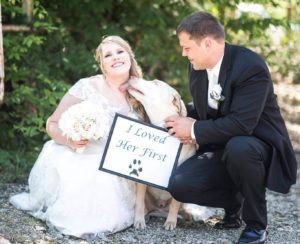
We all joke about not dating someone who our dog doesn’t like, but there is some truth in these words. When someone else enters the picture that does not understand why our dog comes first (or even a close second), it can cause problems. Falling in love with someone who is a dog lover can avoid a lot of fights, heartaches, and frustration.
#1 – Willing to Share the Bed
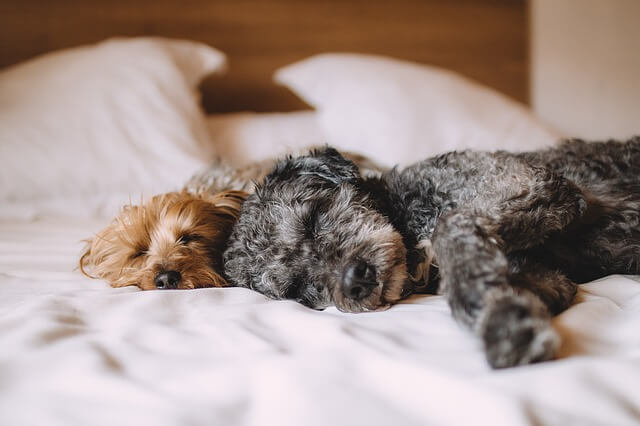
A mutual dog lover will be more likely to not mind sharing the bed with a dog (or two). While not all dog lovers allow this, you still have a better chance than with someone who does not like dogs or is, heaven forbid, allergic.
#2 – Doesn’t Mind Dog Kisses
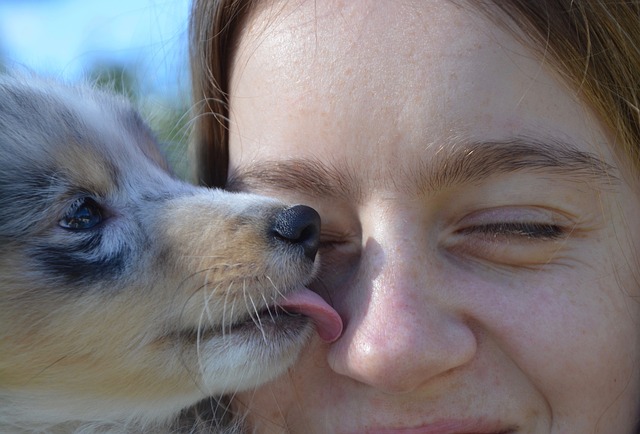
Your dog licks your face and then you want to kiss your significant other. However to a non-dog lover this might just be the grossest thing ever. Avoid this by kissing someone who kisses their own dog too.
#3 – Understands Your Dog Comes First

Breaking a date because your dog is sick or running late at the dog park? A non-dog lover may say he’s “just a dog,” or “you spend more time time with your dog than me.” A dog lover would bring you food so you didn’t have to worry about cooking and caring for your dog or would meet you at the dog park for a romantic evening watching the dogs play.
#4 – Shares Your Passion
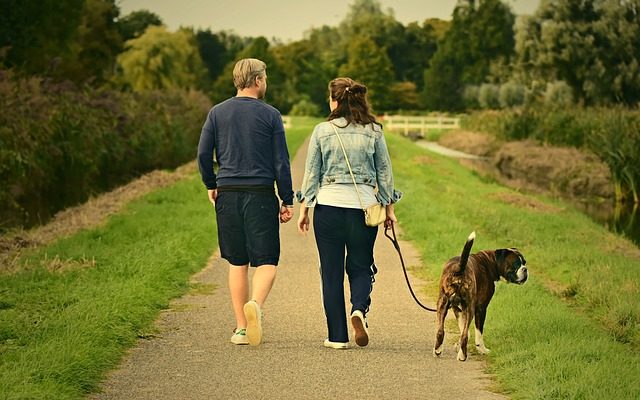
The foundation of a good relationship is sharing interests and passions. If dogs are your passion, why not find someone who loves dogs too? There are plenty of single dog owners out there and they won’t mind going to all those dog events.
#5 – Won’t Complain About Spending
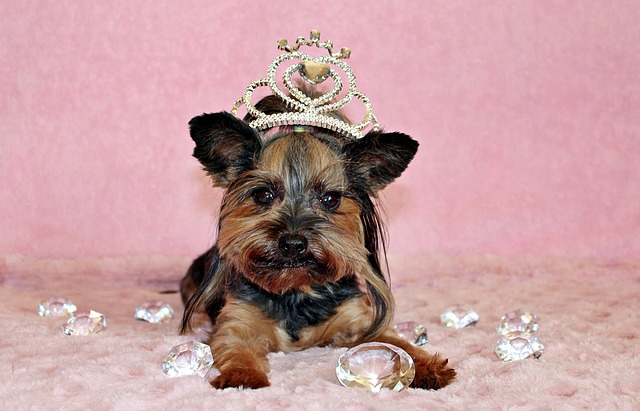
Here are words no dog lover ever wants to hear, “you spend more money on your dog than on me!” Well, yes I do, so what? Another dog lover won’t be as likely to complain about the amount you spend on your dog, or that fact that the dog has more bling that she does.
#6 – Will Let the Dog Come Too

You want to vacation somewhere the dog is welcome. Your significant other wants a “break” from the dog. Avoid this argument by being with someone that only looks at dog-friendly vacations, knowing your first love is coming too.
#7 – Won’t Mind Dog Hair
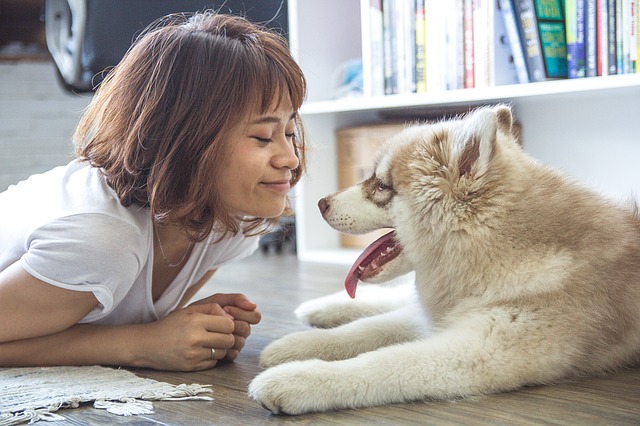
Another dog lover will be okay if you show up for every date with dog hair, in fact she will probably have dog hair on her too. She might even make art out of your dog’s fur!
#8 – Is OK That Your Phone is Full of Dog Pics

Have you ever been asked to see a picture of your new “someone” and had to scroll through 200 images of your dog to finally find the one you took when he was holding your dog? A non-dog lover may start to feel bested by the dog, whereas a fellow dog lover won’t care – their camera roll looks the same.
#9 – Buys Your Dog Gifts
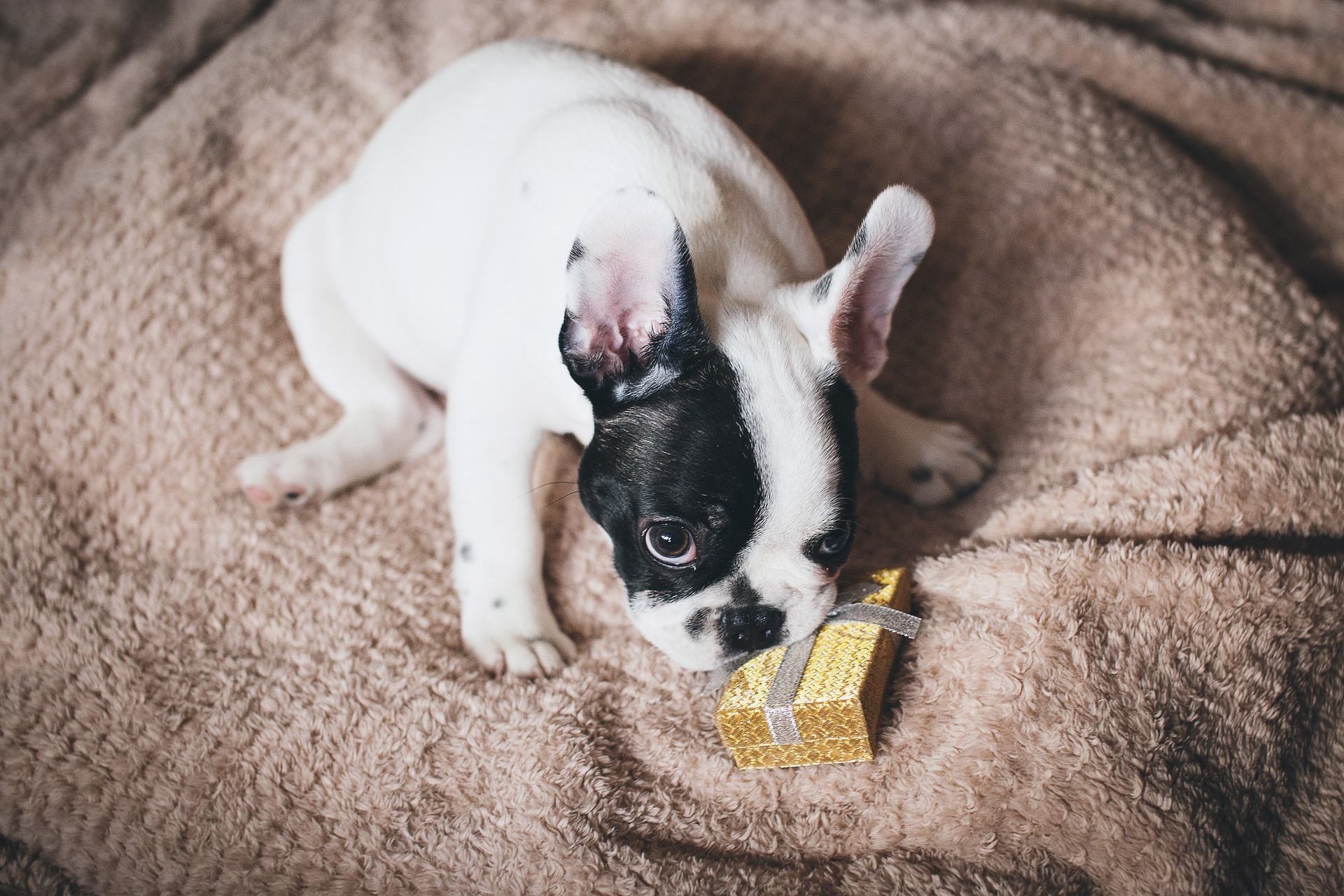
A fellow dog lover will gladly buy your dog a Christmas, birthday, “gotcha” day, a “just because” present without thinking you need your head examined. It may seem silly, but if they get on you every time you want to but your dog something, it will get old fast.
#10 – Willing to Share You
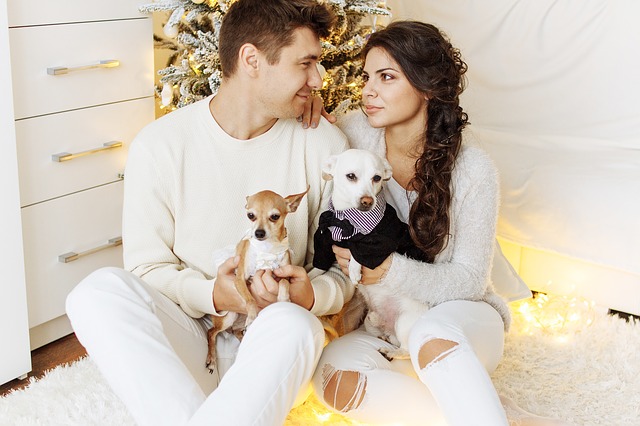
Is your dog used to cuddling with you on the couch? Or expects a 2 minute welcome scratch every time you walk in the door? A non-dog person may not be willing to share you or understand why your dog needs so much attention, but a dog lover will snuggle both of you and be happy about it.
The post 10 Reasons to Fall in Love with a Dog Person appeared first on iHeartDogs.com.
via Whisker Therapy
10 Easy Ways To Stop Your Dog From Begging
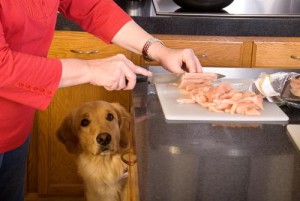
It’s a scene we’ve all been party to a million times or more. The table is set, the family is seated, and as you attempt to take that first bite of the delicious meal you’ve lovingly prepared, you become distracted by a most unwelcome site. Your beloved family dog is seated very nearby, eyeing your food longingly, perhaps with a long string of drool making its slow descent to the floor. Never does your dog sit so still or so quietly as when his gaze is focused squarely on that coveted prize of a hand out.
Begging for food is a very common complaint among dog parents. Perhaps it is a holdover from the early times of domestication when the only way to get food was to patiently wait alongside the humans at the fire. Whatever the reason, it can be highly annoying to everyone in the family and even embarrassing when you have guests. Let’s take a look at 10 ways to get your dog to stop begging.
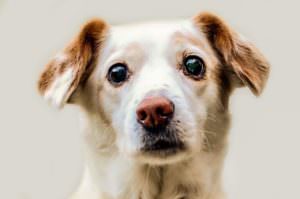
#1 – Put Him in His Place
We’re not talking about an “oh, snap,” arm circling, finger wagging kind of place putting. Going to his “place” is a legit command that you can teach your dog in a relatively short amount of time. By designating a “place” for your pup, such as his bed or crate, there is somewhere he is expected to go to on command and remain until you release him. Naturally this takes some training but with consistency and practice your dog will pick it up.
Every time you eat, instruct your dog to go to his place and enforce it until you are done. The key is to be consistent. If you do this each and every time humans eat, you may be surprised to see that after a while, your dog automatically goes to his place during meal times.
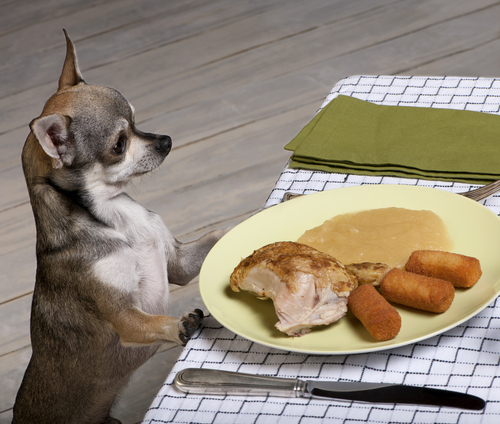
#2 – Don’t Feed from the Table
If you feed your dog from the table, even once, you can expect that nose to be ready and waiting every time after. This is a common mistake that parents make while their dogs are puppies. It’s easy to understand. Puppies are absurdly adorable and hard to resist. You think you can correct the unwanted behavior in time but unfortunately, it’s a hard habit to break. The best way to set yourself up for success is to start off right. From the very beginning, don’t feed your dog from the table.

#3 – Train Your Children
If you have kids, you know this is a tough one. If all of the adults in the house abide by the rule to not feed from the table but the little ones constantly slip her a morsel here and a taste there, your dog will become a beggar, despite the best efforts of those in the house with a fully formed frontal cortex. It can be a painful and frustrating process but you’ve got to train the children not to feed the dog anything, anytime unless specifically given permission to do so.
This is where the “place” command comes in handy. Over time, your child will also become accustomed to the dog being in her place during meals and will stop trying to sneak food to her. With time and practice, your kids and your dog will both have better meal-time manners.
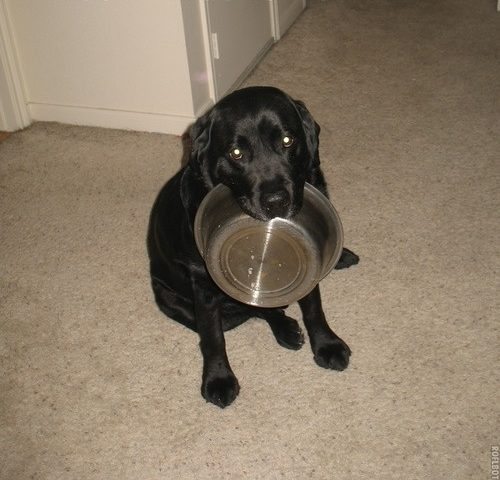
#4 – Feed Your Dog During Meal Times
To discourage begging, feed your dog at the same time that you take your meals. As plates are being set at the dinner table, fill his bowl with dinner, too. Being full and satisfied will make it less likely that he will come looking for scraps. If he finishes first, which he will, instruct him to go to his place, lay down, or simply let him outside for his post-dinner walk about the yard.
#5 – Give Your Dog a Distraction
Meal times offer a great opportunity to offer your dog toys stuffed with treats, a special bone, or a doggie toothbrush. Instead of mealtime being something she longs to participate in, it can be a special time of day for her to do something she doesn’t get to do any other time. The trick here is to onlygive her the special distraction during meals. If she gets it any old time, it won’t be nearly as appealing and she will be lured to the table to resume her bad begging behavior.
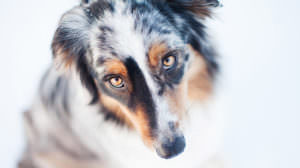
#6 – Ignore Your Dog Completely
When you dog is begging, any attention you give him can be reinforcement for the unwanted behavior. Even when you are clearly displeased with him and resort to scolding or yelling, your dog may see that as increasing his chances of getting what he wants. It is much better to completely ignore your dog than to raise your voice. Pretend your dog is not there and eventually, if you are very patient, your dog will get the message and move along. Repeat this at every meal, consistently.
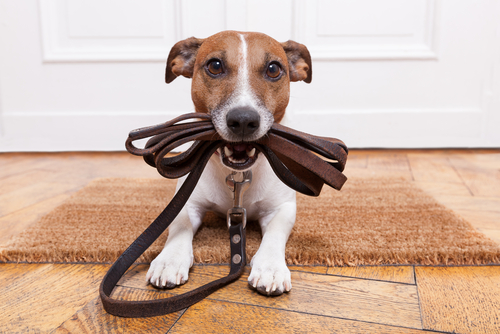
#7 – Tether Your Dog Away from the Table
Using a leash and a fixed object, tether your dog away from the table. This can be a bit bothersome in the beginning as your dog may whine and bark. I know, this is a whole new set of problems to correct. Eventually you may be able to remove the leash with the goal being for your dog to keep his distance without the leash.

#8 – Pre-Meal Playtime or Exercise
Plan to have a vigorous play session or brisk walk before meal times. Throw the ball for 15 minutes of fetch, get down on the floor and play a game of tug, or hit the neighborhood streets for a fast-paced walk around the block. This will tire out your pup and encourage her to sleep soundly while the family enjoys dinner.

#9 – Make Sure Guests Know the Rules
You and your dog may have worked super hard to stop begging. So don’t let all of that effort vanish with a hand out from a well-intentioned but uninformed guest. Politely explain that you’ve been struggling with begging behavior. Let them know you’re finally seeing a change, you’d appreciate your guest not feeding your dog anything.

#10 – Don’t Let Your Dog Be the Clean Up Crew
This one is especially difficult to bear for those with young kids who constantly drop food around the table. It’s so much easier to let your furry friend clean up the fallout. It’s so much work to sweep or wipe it up yourself. However, tasting all that yummy food around the table encourages your dog to seek food there again and again. If you don’t want begging, it’s best to bust out the broom.
Dog begging is something that all dog parents contend with at some point. With patient practice, your dog can become the well-mannered pup of your mealtime dreams. Remember, consistency is key!
The post 10 Easy Ways To Stop Your Dog From Begging appeared first on iHeartDogs.com.
via Whisker Therapy
Veteran’s Service Dog Attacked By Groomer – Tail Amputated
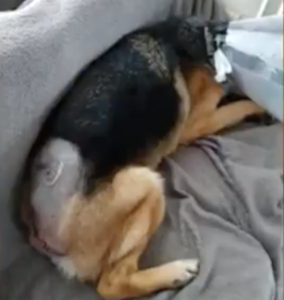
My nightmare! And I know I’m not alone. I love getting my pups groomed. Shiny, brushed-out coats. The sweet smell of perfume…until they jump into the creek. Ugh! But I always worry when I drop them off at the groomer. Somewhere, in the back of my mind, I worry. Will the groomer be nice? Do they really love dogs like I do or is it just a job to pay bills? What if Sandy, my sassy little girl, doesn’t cooperate while they’re bathing her? Will they be sweet? Or mean? Maybe even hurtful.
Brevard County Sheriff Wayne Ivey stated that the Florida groomer was arrested after he attacked a veteran Rick McGuire’s 8-year old German Shepherd service dog. The attack was so vicious that the dog’s tail needed to be amputated. The groomer, James Corell Suthann, 37, of Satellite Beach, was charged Monday with one felony count of animal cruelty.
Check Out the Brevard County Sheriff’s Office Response. Love this!!
The attack occurred when TT, a veteran’s service dog, would not be still during grooming. Suthann became angry and can be seen abusing the dog. Surveillance video shows Suthann cinch the dog’s head down so tightly, she could not move. The service dog was obviously in pain. Then Suthann grabbed the dog’s tail, lifting the dog off the ground and twisting it a full 360 degrees. The damaged caused was too extensive, and the tail could not be reattached. It was later amputated.
TT was also struck in the head with a hose nozzle, according to the sheriff’s office.
Click Here to See the Full News Report
According to Sheriff Ivey, “The video is so graphic that I will not post it on Facebook, but trust me when I tell you that it is one of the most difficult things I have ever had to watch in my 39 years of law enforcement because of the horrific and cruel way the pet was treated.”
Brevard County Sheriff Wayne Ivey and Satellite Beach police Chief Jeff Pearson personally escorted James Cordell Doughy Suthann to jail following his arrest on Monday.
TT is recovering from emergency surgery to remove the injured tail said her devastated loving veteran papa who suffers from PTSD.
H/T: NBC WESH2
The post Veteran’s Service Dog Attacked By Groomer – Tail Amputated appeared first on iHeartDogs.com.
via Whisker Therapy
Your Dog's Personality Can Change Over Time
Like humans, dogs’ personalities likely change over time, according to new research.
When dog owners spend extra time scratching their dogs’ bellies, take their dogs out for long walks and games of fetch, or even when they feel constant frustration over their dogs’ naughty chewing habits, they are gradually shaping their pets’ personalities. Dogs, like people, have moods and personality traits that shape how they react in certain situations.
“When humans go through big changes in life, their personality traits can change. We found that this also happens with dogs—and to a surprisingly large degree,” says lead author William Chopik, professor of psychology at Michigan State University and lead author of the study, which appears in the Journal of Research in Personality.
via Whisker Therapy
Why Does Your Dog Eat Tissues?
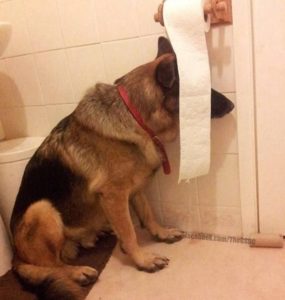
Is your dog constantly performing an at-home dumpster dive for some less than appetizing snacks? Lest you think you have the weirdest dog around, fear not, for you are not alone. Eating tissues and all sorts of other non-food items is a fairly common condition called pica. Let’s look at why your dog does this and how you can curb this distasteful appetite.
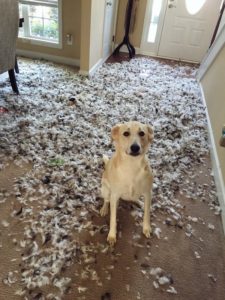
4 Possible Reasons Your Dog Eats Tissues
1. It’s Just Plain Fun
If your puppy is eating tissues or anything else she can wrap her muzzle around, it’s likely that she is simply satisfying her curiosity. Just like their human counterparts, juvenile canines learn about the world through their mouths. Biting, shredding, pawing, and eating tissues is funand comes with the bonus of teaching her new information about this place called home.
Puppies aren’t the only ones who like to party, though! Adult dogs gotta get their kicks and when bored or feeling anxious in your absence, they will find something to pass the time. Tissues and toilet paper are readily available and may even activate your dog’s ancestral hunting instinct. Expert contributor to the Canine Corner blog on Psychology Today, Stanley Coren made an interesting observationabout the behavior. He said that when dogs put tissue in their mouth it feels like feathers or fur and, therefore, activates the dog’s innate urge to rip, tear, and even eat the material.

2. It Smells Like You
Let’s face it, dogs do things that are pretty gross to us humans. Digging in the trash to eat tissues that are covered with your snot is pretty high up there on the gross continuum. Why do they enjoy this stomach-turning snack? It might be because they love you. They love you so muchthat they literally want to eat you up.
Your bodily fluids smell like you and not just the obvious armpits after a long workout variety. The part of a dog’s brain that is dedicated to deciphering olfactory information is proportionally 40 times bigger than the comparable area in a human brain. Using a comparison we can all see clearly, former director of the Sensory Research Institute at Florida State University James Walker said, “If you make the analogy to vision, what you and I can see at a third of a mile, a dog could see more than 3,000 miles away and still see as well.”
A dog’s sense of smell is insanely keen. They smell you in your used tissues, dirty underwear, and socks and because of this, they often consume them in a statement of ultimate rapture.
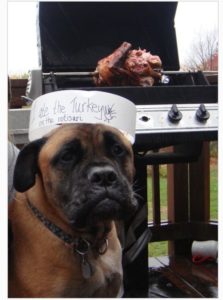
3. The Diet is Out of Whack
It’s commonly thought that pica is connected to a gap in nutrition that the dog is attempting to fill and the scientific community agrees. A case study published in 2017 states that this habit of eating non-food material is often caused by a mineral deficiency.
There are a staggering number of options available when it comes to dog food and it’s hard to know if you are making the best choice. If your dog seems to always be on the hunt for more, it could be that his diet is lacking in some key vitamins and minerals. Strange as it seems, rocks, dirt, paper products, wood and more are sought after in search of nutrients.
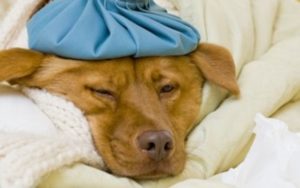
4. An Underlying Medical Condition
If you’ve ruled out other causes for your dog’s abnormal eating habits, it is possible that there is an underlying medical condition contributing to the problem. Conditions like diabetes, thyroid disease, internal parasites, and hormonal imbalances are all thought to be associated with pica.
If you suspect this to be the case with your pet, your vet can help. Blood work, stool samples, and a physical exam can help rule out or diagnose a problem that could be the root cause of this behavior.

Should I Worry About My Dog Eating Tissues?
Strictly speaking, eating anynon-food item is less than ideal for your pup’s health but you don’t need to rush to the emergency vet with the ingestion of a single tissue. If she mostly plays with tissues rather than eating them outright, you probably have nothing to worry about. Volume and size are key to the concern factor here.
Tissues are thin, soft, and will pretty much disintegrate with enough liquid. In small amounts, your pup will probably just pass these pieces through her body. However, a more varied palette for non-food items is definitely cause for concern.
The problem is that without the ability to be broken down and digested, these foreign objects can cause a gastrointestinal blockage. That means a great deal of pain followed by surgery to remove the blockage. Paper products like tampons, pads, and even paper towels are big enough to really mess things up in your dog’s bowels.
If your dog is acting sick, doesn’t want to eat, vomits repeatedly, and just doesn’t seem herself trust your gut. Get her checked out by your vet.
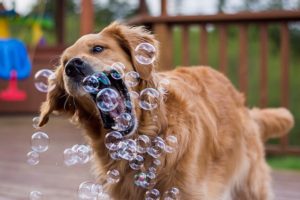
How to Stop My Dog from Eating Tissues
Naturally, if you aren’t completely sure what is causing a behavior, finding a solution proves tricky. However, the good news is that there are a few common sense steps you can take to control the behavior.
- Make sure your dog has a variety of safe toys that combat boredom. Treat puzzles are an engaging way to keep your pup occupied. These toys can also boost your dog’s IQ. And fight boredom.
- Limit your dog’s access to tissues, especially when you aren’t home. Make a habit of keeping bathroom doors closed and use trash cans with a pup-proof lid.
- Spend uninterrupted daily time with your pooch so they can soak you up in more healthful ways. Go for a walk, snuggle on the couch, or throw the ball around. A little bit of love goes a long way.
- If an imbalanced diet is to blame, consider widening the variety of food your dog eats. Eating only dry dog food is sort of like humans eating nothing but fortified breakfast cereal. CEO and Chief Editor at Web-DMV, Roger Welton saysthat dogs are omnivores and should be fed as such. Incorporating meat, bone broth, and dog-safe fruits and vegetables can help provide needed nutrients.
- Consider seeking medical help from your vet to rule out contributing illness or parasites.
We are nothing if not entirely devoted to our fine furry friends, even when they do things that make us wrinkle our noses in disgust. If your dog has a problem eating tissues, try some of the solutions we presented here. Maybe you will succeed in helping your buddy kick the habit for good!
The post Why Does Your Dog Eat Tissues? appeared first on iHeartDogs.com.
via Whisker Therapy
9 Myths About Dog Aggression
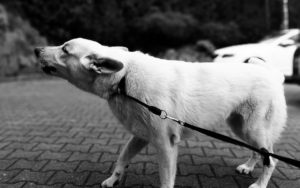
There’s no denying the fact an aggressive dog is potentially dangerous. It’s a problem that requires attention from a professional dog behaviorist, but there’s a lot more to canine aggression than most people realize. Aggression is one of the most common behavioral issues seen in dogs, and it’s one of the top reasons why dogs are euthanized and surrendered to shelters. Coincidentally, it’s also one of the most misunderstood topics in the dog world. We’re here to clear the air and dispel these common myths about dog aggression.
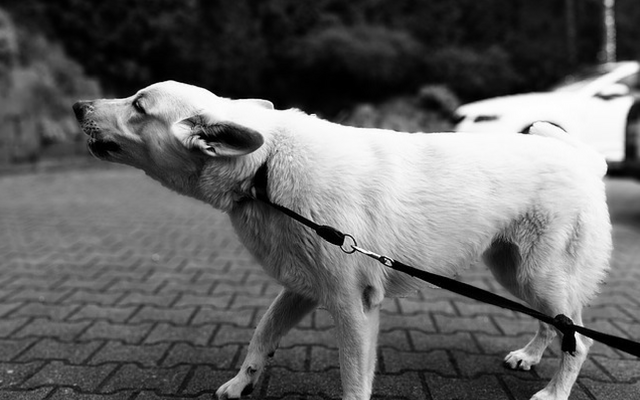
1. A “good” dog is a dog that’s never aggressive.
Similar to a tail wag or shake off, aggressive behavior is a completely normal form of canine communication. Your dog can’t come out and tell you when they’re scared, frustrated, or angry, and lashing out is their desperate attempt to make you understand. Growling, barking, snapping, and even biting are all typical ways in which dogs settle conflicts. Even “good dogs” that excel in obedience class and love spending time with people have been known to occasionally resort to aggression. PetCoach explains it well by saying,
“Expecting your dog to never do any of these things [showing aggression], no matter what happens, is a bit like expecting a person to go through life without ever having a single disagreement or argument with someone else–not very realistic in either case!”
2. Aggression happens out of the blue.
When people say a dog attacked them “out of nowhere,” all they’re really saying is they weren’t paying attention to the dog’s body language. Dogs almost never attack without warning. (The one exception is if the dog has a mental condition that impairs cognitive function.) A dog’s aggressive behavior is always in response to a trigger, and once you know what that trigger is, you can learn to expect their reaction. Contrary to popular belief, dogs are quite good at communicating their discomfort in non-aggressive ways. The issue is, humans are’t good at reading those signals before the situation escalates.
Before a dog attacks, their body language reflects what they’re thinking. Yawning, licking their lips, and refusing to look directly at someone are all signs of a stressed out dog. They take on a “frozen” posture where their body is rigid and their eyes are wide and unblinking. The signs might be subtle to the human eye, but when you know what to look for, aggression is one of the most predictable dog behaviors there is.
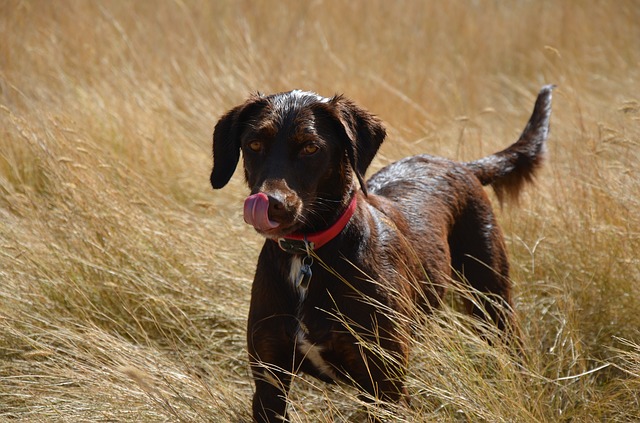
3. An aggressive dog is always an aggressive dog.
Many people think that once a dog shows signs of aggressive behavior, they’re no longer safe to be around. This kind of assumption is what lands countless healthy, friendly dogs in shelters and on euthanasia lists. A dog might growl at a groomer who comes at them with nail clippers, but that kind of fear aggression doesn’t usually translate into other parts of the dog’s life.
In this instance, context is key. Once the trigger is removed (in this case the trigger is the groomer brandishing nail clippers), most dogs will go back to being their normal, friendly selves. They’re aggressive around nail clippers because they’ve developed a negative association with having their nails trimmed, but they have no problem with interacting with people on a normal basis. Their aggression doesn’t define them, and they don’t deserve to be given up because of the misunderstanding that is does.
4. All aggression is the same.
Aggression in dogs is generally understood as a set of behaviors meant to threaten or harm another animal or person. It usually starts with a warning, like growling or snapping, and escalates into a dangerous physical confrontation. The physical actions might be the same from one dog to the next, but that doesn’t mean all dog aggression is the same.
There are actually several different kinds of canine aggression including frustration-elicited aggression, fear aggression, territorial aggression, predatory aggression, defensive aggression, and pain aggression. To determine what kind of aggression a dog is displaying, think about what happened immediately before the attack, what/who bore the focus of the aggression, and what seemed to stop it. The only way to help a dog work through their behavioral issues is to understand what caused it in the first place. ASPCA says,
“A beneficial scheme for understanding why your dog is aggressive is based on the function or purpose of the aggression. If you think of aggression this way, you can determine what motivates your dog to behave aggressively and identify what she hopes to gain from her behavior.”
5. Aggressive dogs are born that way.
It’s true some dogs have genetic makeups that make their personalities more assertive than others, but that rarely translates into aggression. People like to blame nature for a dog’s aggressive behavior, but the truth is, domestic dogs are not inherently aggressive toward people. Aggression is something they learn through life experiences. Some do it as a defense mechanism to keep potential threats at bay, and others resort to growling and snapping because of specific events that transpired in the past. Either way, something had to happen to make them believe lashing out is the best/only solution to a particular problem.
6. Certain breeds are more aggressive than others.
Today it’s pit bulls, and in the past, Rottweilers, Dobermans, Mastiffs, and even German Shepherds have all suffered under the scrutiny of misguided stereotypes. There have been countless scientific studies on the topic proving aggressive behavior is just as likely in “family-friendly” breeds as it is for the breeds most often banned in cities and public housing. The incorrect idea that there are aggressive dog breeds leaves countless dogs abandoned in shelters and mistreated by people who don’t understand them. If you’re still not convinced, read this study published in ScienceDirect. It says,
“These data suggest that although general characteristics of dogs and owners may be a factor at population level, it would be inappropriate to make assumptions about an individual animal’s risk of aggression to people based on characteristics such as breed.”
7. Aggression is only a problem in big dogs.
If you’ve ever had your ankles nipped by a feisty Chihuahua, you already know small dogs are just as likely to be aggressive as big dogs. Small breed dogs often have a problem called “Napoleon Syndrome.” It’s not an actual medical condition, but it’s what happens when small dogs overcompensate for their stature by lashing out with aggression.
It’s true a bite from a small dog won’t do as much damage as a bite from a big dog, but that doesn’t mean small dog aggression doesn’t matter. Too many small dog owners think it’s cute when their little dog “acts all tough.” But bites from small dogs always hurt, and there’s the chance they can become infected. Not addressing the issue of aggression in a small breed dog isn’t helping the dog, and it’s definitely not helping your ankles.
8. Dominance leads to aggression.
In the late 1900s, researchers thought they had a solid theory concerning canine dominance. They looked at how captive wolves interacted with each other and took notes on pack structure. When the study was finished, scientists made the assumption that because dogs are descended from wolves, domestic dogs must behave similarly to the wolves in the study. It became widely accepted that “dominant” dogs use force to dethrone those that threaten their status just like the captive wolves did.
The issue, however, is those scientists were wrong. It has since been proven that domestic dogs do not behave the same as captive wolves, and so-called “dominant” behavior does not lead to aggression. That mistake has since been recognized, but it’s lead to a misunderstanding about what dominance actually means when it comes to dogs. Australia Veterinary Behaviour Interest Group is working to set the record straight and says,
“It is not accurate to describe a dog as having a dominant personality. The word should only ever be used to describe a single interaction between two individuals competing for a resource such as a piece of food or a toy. One dog will usually give up the contest and leave the resource for the other. In that situation, the individual who wins is dominant.”
9. Dogs should be punished for showing aggression.
When a dog growls, lunges, or snaps, many people jump to doing what they think is the most appropriate reaction: punishment. What they actually end up doing, however, is making the problem worse. Scolding and hitting a dog that is obviously already afraid, nervous, or uncomfortable will push their emotions even further into the red. A study done in 2009 found that when hit or kicked, 43% of dogs respond with more aggression, and using any kind of confrontational training tactic usually results in an increase in aggression.
It’s important to remember that aggressive actions are a form of communication, and by growling or even biting, your dog is trying to tell you something. Dog trainers including Victoria Stilwell recommend using a combination of positive reinforcement and environmental management to help a dog overcome whatever it is that’s making them feel like aggression is the right thing to do.
The post 9 Myths About Dog Aggression appeared first on iHeartDogs.com.
via Whisker Therapy
Why On Earth Does My Dog Eat Poop?
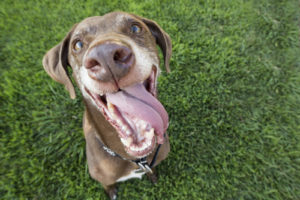
For those of you with a dog at home or those of you who love dogs, you know that some of their habits aren’t very polite. In fact, some doggy behaviors are downright confounding and a little nasty. Yes, I’m talking about consuming poop. Not all dogs do it, but if you have one who does like feces, you know exactly what I’m talking about. Why do dogs eat poop?
It can be quiet worrisome if you have a pup who exhibits this behavior. Are they at risk? Is there something “wrong” with them? You’ll be surprised to find out this is common behavior and there are ways to train your dog not to consume fecal matter. Before we get to training, let’s talk about the matter at hand.
What’s Appealing about Poop?
If your dog likes to eat poo, don’t be hard on yourself. A study released by researchers at the University of California at Davis found that 16% of people with dogs say their pup eats other dog’s feces. There’s comfort in numbers, right?
The American Kennel Club has more reassurance. For some species, like rabbits, eating feces is a normal way to consume nutrients. And it is even typical behavior for puppies and their moms. Dog moms will lick at their baby to encourage elimination and puppies may consume feces as they learn about the world around them.
For non-puppy dogs, the reasons behind consuming feces may date back to the dog’s ancestry. Benjamin Hart, a veterinarian who conducted the research study at UC Davis, surveyed 3,000 people with dogs. The study didn’t find evidence linking coprophagy (poop consumption) to age, dietary differences or compulsive behaviors. They also didn’t find that dogs who consumed feces frequently had trouble with house training.
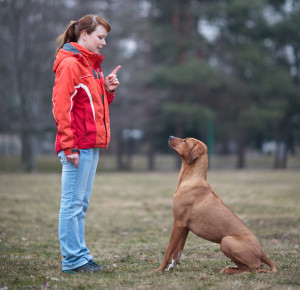
Then what was the common ground? The study showed more than 80% of the stool-consuming dogs preferred feces no more than two days old. Hart told The Washington Post that he attributes the dog’s preference for fresh poo to a dog’s wolf ancestry.
Hart told the post, “Wolves typically defecate away from their dens, in part because feces contain intestinal parasite eggs. But if, say, a sick or lame wolf did its business at home, the waste wouldn’t necessarily be dangerous immediately. Parasite eggs usually don’t hatch into infectious larvae for a few days.” So the dogs would eat the feces more quickly as to not get infected.
PetMD has some other ideas about why your pup may eat their feces. Your dog may be bored, want your attention, or be stressed. These can be treated, and we’ll talk more about that later.
Okay, there are some reasons behind the appeal. But there’s the outstanding question of potential danger.
Is Poo Harmful to Eat?
It depends. The American Kennel Club and Wag say that ingesting fecal matter from another animal (think: cows, horses, sheep) is potentially harmful to your pup. Even other dogs’ feces should be avoided. When your dog consumes feces from another animal, they are ingesting whatever that other animal ate.
If your dog consumes his own feces, there is less to worry about since he has already ingested that food.
Your dog may also consume cat feces. It’s enticing to dogs because the stool smells like cat food. Dr. Jennifer Coats, a vet, told PedMD that, like other forms of poop, it could possibly harm your pup. Feces contains a lot of bacteria and it could make your dog ill, but not definitely.
If you are concerned and notice some differences in your dog’s behavior or mannerisms, call the vet. Some symptoms to look out for are vomiting, nausea, lethargy, no interest in food, or diarrhea.
What Can You Do About It?
If your dog is part of the 16% that consume feces, you’re probably wondering how you can change the behavior. There are a few different tactics you can take.
Some vets think dogs consume feces because of a Vitamin-B or enzyme deficiency. They may prescribe these supplements to your dog’s diet. Other vets suggest modifying your dog’s diet with more fiber or adding yogurt or papaya to your dog’s food because it may make their stool less edible. Before you change your dog’s food, call your vet and make sure they approve.
There are other ways to teach your dog to break the habit of eating poop. Most of these are simple and you can start making some changes right away.
- Clean up your dog’s living space. If there is no poop in their vicinity (think: your backyard), they won’t be able to eat it.
- Teach your dog to leave it and use the command when your pup prepares to eat the poop.
- Offer your dog toys to keep him engaged when you aren’t around. Get your dog the BetterBall. It’s a toy and a game and it offers a reward when your dog manages to retrieve the treat.
- Supervise your dog during their walks. If you typically let your pup roam free in the backyard to do her business, keep a watchful eye to monitor her behavior.
You Aren’t Alone…
…if your dog consumes feces. Try not to be embarrassed by the behavior. There are ways you can help your dog learn not to eat their poop or other animals’ poop. Talk to your vet and make some simple changes to their living area and walk schedule.
The post Why On Earth Does My Dog Eat Poop? appeared first on iHeartDogs.com.
via Whisker Therapy
Constant Panting Could Be A Sign Of A Serious Problem

It seems to most of us that our dogs constantly have their mouths open, panting. We notice that it seems to be louder or more obvious after running or playing, but other than that we may not give it much thought.
However, knowing why your dog pants is an important key to reading your dog in order to identify health and emotional states. Every dog owner should be paying attention to their dog’s “panting habits.” It could save their life.

Temperature Regulation
Dogs use panting to regulate their temperature. This is why when they have been running or playing hard, they pant harder. Owners can use this cue to let them know when their dog needs a break to prevent “over doing it.” This is important, as many dogs will continue to “work” with their owner even if they are over-exerted. It’s our job to give them a break when they need it.
Heatstroke
Along with temperature regulation, if you notice your dog panting excessively in warmer weather, it can be a sign of deadly heatstroke. Get your dog out of the heat and to a vet as quickly as possible.
Overweight
“Overweight dogs tend to pant more,” says Amanda Cornell, CPDT-KA, owner of Accomplished Canines, “because their bodies have a harder time regulating heat.”
The best thing you can do for an overweight dog is diet and exercise. They will not only be more comfortable, but they will live longer.
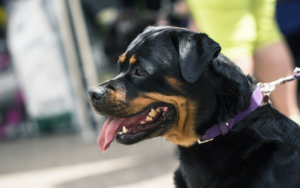
Breathing
Cornell also notes that “brachycephalic dogs pant more because they don’t get the same amount of air through their smushed noses.” As we know, these dogs are also more susceptible to the aforementioned heatstroke and being overweight is even more hazardous for these breeds.
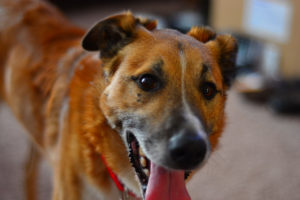
Illness/Poisoning
According to Petmd.com, a lot of illnesses and poisons can cause your dog to pant. If you notice your dog is panting heavier or more than usual, you should take them to the vet for a check-up.
Therefore, it is good to notice what your dog’s normal panting is like, so you can be aware of changes. It is such an everyday occurrence that it is easy to not think about it. BUT it is important for your dog’s health that you pay attention. If you suspect abnormal panting, consult your veterinarian immediately.
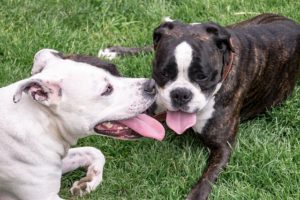
Stress/Fear
Probably the least known, dogs will also pant more when they are stressed or fearful. Petmd.com says you can actually tell when an electric storm is coming by your dog’s panting.
“This is a normal fear response — dogs are easily startled by loud noises and bright flashes of light (such as with thunder and lightning).” (Petmd.com)
If you have a dog that is fearful or anxious, start paying attention to their panting. It can actually tell you a lot about your dog’s mood. Are you sitting in a nice, air conditioned obedience class and your dog is lying next to, seemingly calm, but panting heavily? Your dog is stressed and you need to change something in the environment to help ease her nerves.
Knowing more about your dog’s body and how it functions will make your dog happier and you a better owner.
The post Constant Panting Could Be A Sign Of A Serious Problem appeared first on iHeartDogs.com.
via Whisker Therapy




